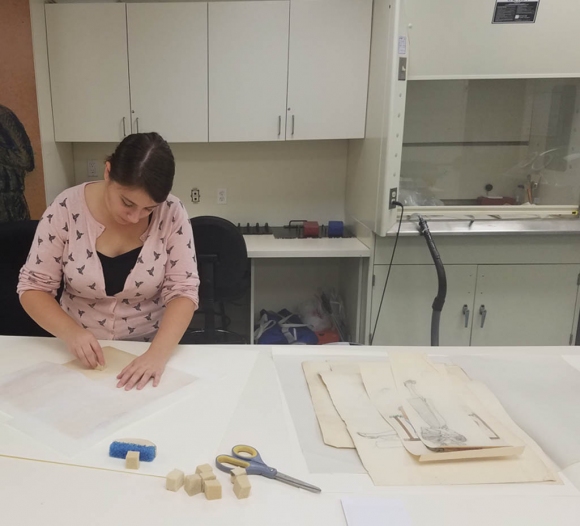June is a popular month for weddings and what better way to join in the celebrations than to share several wedding garments from our collection with you?
The first pictured garment is known as a bindalli, which means 1,000 branches, named for the decoration consisting of radiating scrolling stems and sprays. An ethnic garment, it was popular with urban women in the Ottoman Empire during the 19th century. The style of embroidery – gold-washed metal thread wrapped around pasteboard –p called dival work or kaveséra. The example shown here wsas worn by Buka Yohai for the ceremonial walk to the mikvah before her marriage to Nahman YOhai in Gallipoli in 1910. The dress was worn by her mother, Naomi Ben Exra, and grandmother before her. The central decorative motif is striking: a graceful form evoking a tree of life, with grape clusters and sheaves of wheat, perhas symbolizing fertiflity. The garment has a special undergarments, a chemise, embroidered at the neck and wrist where the decoration would be visible.

Ceremonial Bindalli Dress, Ottoman (Gallipoli), 19th century, Velvet: silver thread washed with gold, sewn over parchment, appliquéd, Collection of Yeshiva University Museum, Gift of Mr. and Mrs. Nahman Yohai
The chemise for this bindalli matches a tallit katan made for the groom, Nahman Yohai, embroidered at the neck with the Hebrew inscription “Ben Porat Yosef” (Joseph is a fruitful bough). Like the embroidery at the neck of the bride’s chemise, the inscription would have been visible over the neck of the groom’s caftan.

Tallit Katan. Gallipoli, 19th century. Silk batiste; metal thread embroidery; wool fringes. Hebrew inscription: Ben Porat Yosef. Collection of Yeshiva University Museum, Gift of Mr. and Mrs. Nahman Yohai
For the huppah ceremony, the Ottoman Jewish bride usually wore European dress, frequently white or ecru, as in this wedding outfit from Turkey. The adoption of European-style wedding costume, made with hooks and buttons in the Western manner instead of traditional ethnic dress, attests to the widespread “modern” trend that spead through cities during the final decades of the Ottoman Empire. Traditional Ottoman-style costume was loose-fitting, not tailored, and was held together with drawstrings or sashes, not with buttons. Although it could be decorated with elaborate embroidery like the bindalli dress, there would be no ruffles or flounces.

Wedding Costume. Turkey, ca. 1890. Blouse: lace. Skirt: damask. Shoes: leather, damask embroidery. Collection of Yeshiva University Museum. Gift of Emily Caffin

Comments
Share Your Comments: